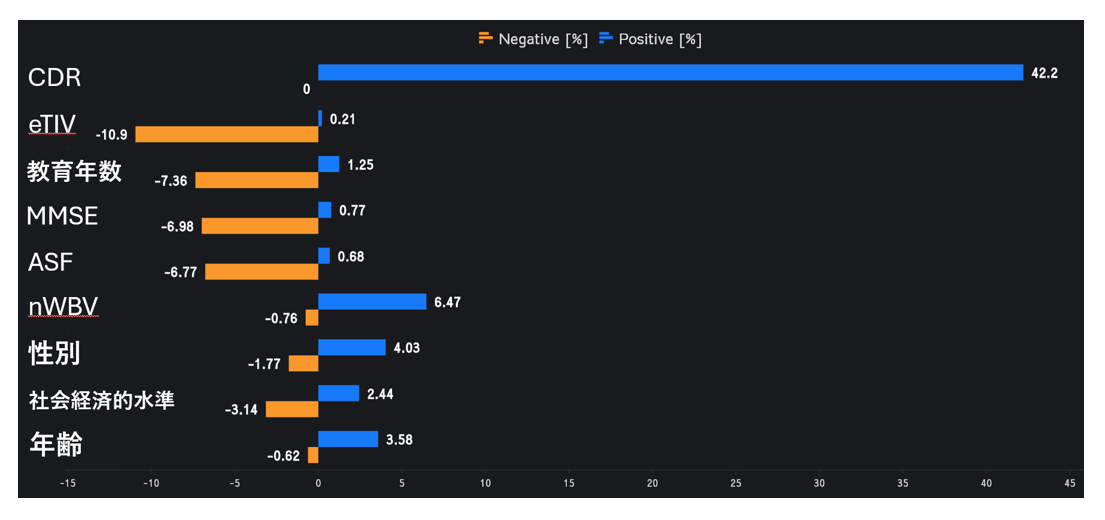Alzheimer’s disease is challenging to detect in its early stages. However, early prediction is critical for timely treatment and intervention. This study presents a risk prediction model using clinical and brain imaging data, developed with the Multi-Sigma®’s neural network. Key predictive factors were identified through contribution analysis.
1. Data Used for Analysis
We used open dataset from OASIS-2, featuring cognitive assessments (MMSE, CDR), brain imaging data (eTIV, nWBV, ASF), gender (female: 0, male: 1), age, years of education, and socioeconomic status (1 to 5). The target variable was binary: healthy (0) or dementia/progression to dementia (1).
2. Alzheimer’s Disease Risk Prediction Using Multi-Sigma®
The prediction model based on Multi-Sigma®’s neural network achieved a high accuracy of 96.0% and demonstrated excellent classification performance with an AUC of 0.973. Of the 75 test cases, the model yielded 34 true positives (TP), 38 true negatives (TN), 0 false positives (FP), and 3 false negatives (FN).

3. Contribution Analysis Using Multi-Sigma®
Multi-Sigma®’s contribution analysis feature revealed the impact of each variable on the prediction of Alzheimer’s disease risk. In particular, the Clinical Dementia Rating (CDR) showed a strong positive influence of 42.2%.
On the other hand, negative influences were observed for estimated total intracranial volume (eTIV) at -10.9%, years of education at -7.36%, and the Mini-Mental State Examination (MMSE) at -6.98%, suggesting that these factors may be associated with a reduced risk of Alzheimer’s disease.

4. Conclusion
The neural network model built with Multi-Sigma® achieved 96.0% accuracy in predicting Alzheimer’s disease risk. Among the variables, CDR was identified as the most important predictive factor, with eTIV, years of education, and MMSE also making significant contributions to risk prediction. These indicators may support earlier intervention in disease progression.
(Data source) Open Access Series of Imaging Studies (OASIS): Longitudinal MRI Data in Nondemented and Demented Older Adults. Marcus, DS, Fotenos, AF, Csernansky, JG, Morris, JC, Buckner, RL, 2010. Journal of Cognitive Neuroscience, 22, 2677-2684. doi: 10.1162/jocn.2009.21407
Publication approval granted by the OASIS-BRAINS Team (June 13, 2025).
